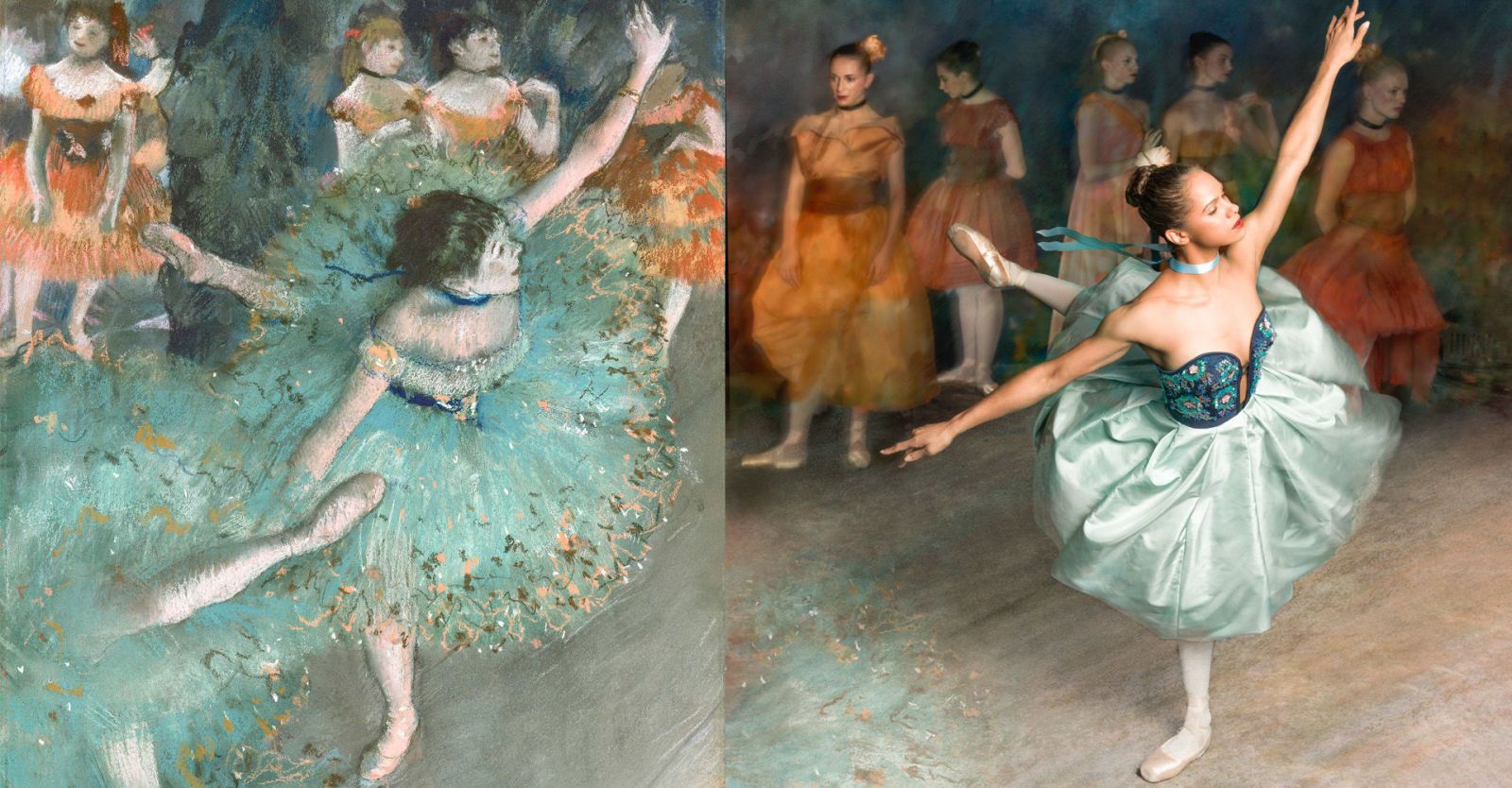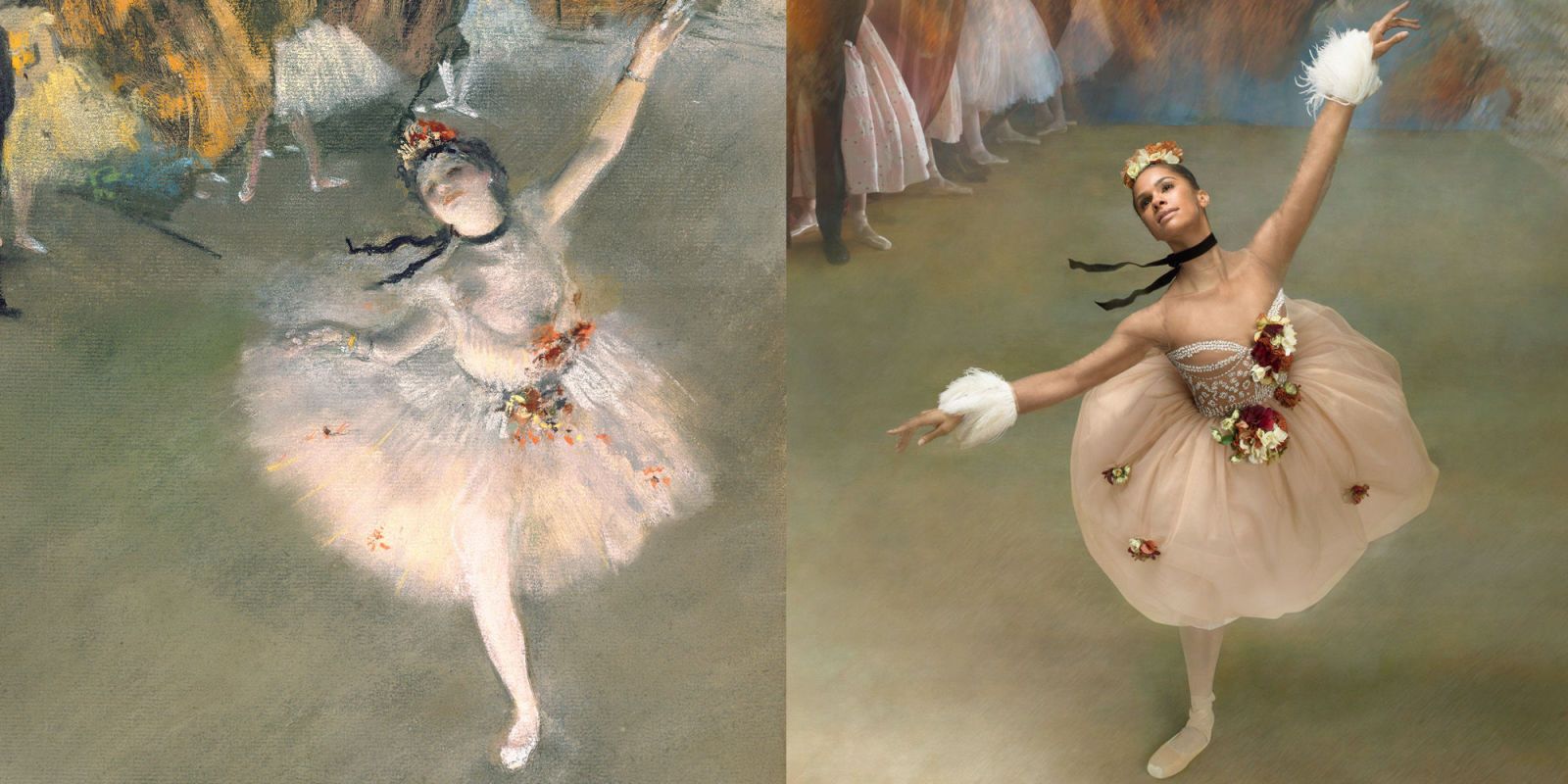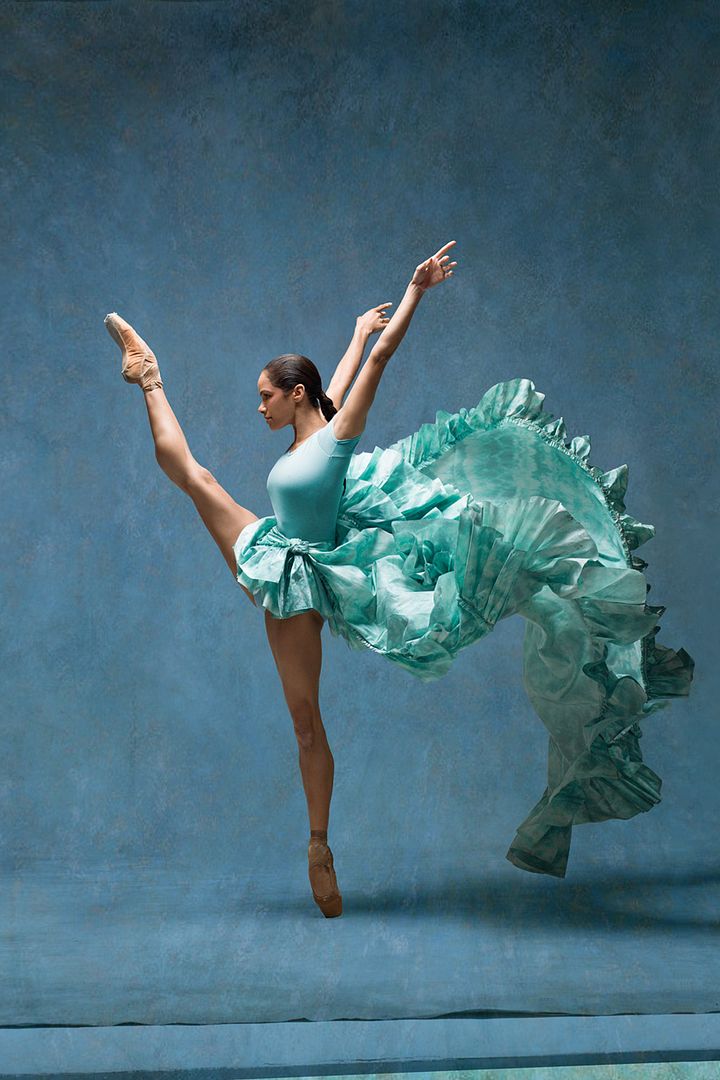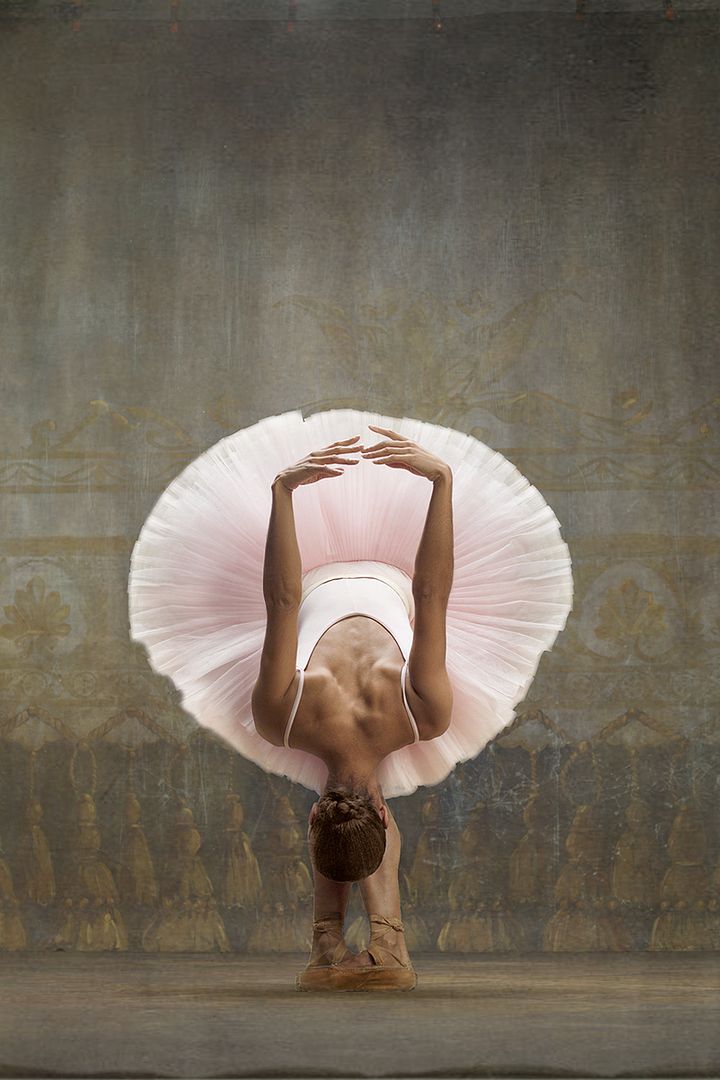Post by Minimal on Feb 11, 2016 18:16:33 GMT -8
I love Misty! These are some great shots. She nailed them perfectly.
The Harper's Bazaar article is quite lengthy, so I included only a few paragraphs from it.

Misty Copeland, principal dancer at the American Ballet Theatre, appears in Harper's Bazaar to recreate iconic paintings and sculpture from impressionist painter Edgar Degas. With her presence, Misty once again disrupts the historical whiteness of ballet.

Ballet dancers, Misty Copeland tells me, like to be in control. It's something about ballet itself—the painstaking quest to achieve the appearance of a kind of effortless athleticism, fluidity, and grace—that makes it hard to let go. "I think all dancers are control freaks a bit," she explains. "We just want to be in control of ourselves and our bodies. That's just what the ballet structure, I think, kind of puts inside of you. If I'm put in a situation where I am not really sure what's going to happen, it can be overwhelming. I get a bit anxious."



One of Degas's best-known ballet works is Little Dancer Aged Fourteen, a sculpture of a young ballerina lost in a moment of her own. "I definitely feel like I can see myself in that sculpture—she just seems content but also reserved," Copeland says. "I was really shy and introverted at that age. I don't even have an image in my head of what I remember a ballerina being or existing before I took a ballet class. Ballet was just the one thing that brought me to life."
Source: www.harpersbazaar.com/culture/art-books-music/a14055/misty-copeland-degas-0316/
The Harper's Bazaar article is quite lengthy, so I included only a few paragraphs from it.

Misty Copeland, principal dancer at the American Ballet Theatre, appears in Harper's Bazaar to recreate iconic paintings and sculpture from impressionist painter Edgar Degas. With her presence, Misty once again disrupts the historical whiteness of ballet.

Ballet dancers, Misty Copeland tells me, like to be in control. It's something about ballet itself—the painstaking quest to achieve the appearance of a kind of effortless athleticism, fluidity, and grace—that makes it hard to let go. "I think all dancers are control freaks a bit," she explains. "We just want to be in control of ourselves and our bodies. That's just what the ballet structure, I think, kind of puts inside of you. If I'm put in a situation where I am not really sure what's going to happen, it can be overwhelming. I get a bit anxious."

Copeland says that's part of the reason she found posing for the images that accompany this story—which were inspired by Edgar Degas's paintings and sculptures of dancers at the Paris Opéra Ballet—a challenge. "It was interesting to be on a shoot and to not have the freedom to just create like I normally do with my body," she says. "Trying to re-create what Degas did was really difficult. It was amazing just to notice all of the small details but also how he still allows you to feel like there's movement. That's what I think is so beautiful and difficult about dance too. You're trying to strive for this perfection, but you still want people to get that illusion that your line never ends and that you never stop moving."
It should probably come as no surprise that Copeland would have trouble conforming to someone else's idea of what a ballerina should look like; she gave that up a long time ago. At 33, she's in the midst of the most illuminating pas de deux with pop culture for a classical dancer since Mikhail Baryshnikov went toe-to-toe with Gregory Hines in White Nights. Last June, she was named a principal dancer at American Ballet Theatre, the first African-American woman to hold that distinction. She was also the subject of a documentary, Nelson George's A Ballerina's Tale, which chronicled her triumph over depression and body-image issues, as well as her comeback from a career-threatening leg injury in 2012. The story of her rise from living in a single room in a welfare motel with her mother and five siblings to the uppermost reaches of the dance world has become a sort of 21st-century parable: the unlikely ballerina, as Copeland referred to herself in the subtitle of her 2014 memoir, Life in Motion, who may be on her way to becoming the quintessential ballerina of her time.
Degas's ballet works, which the artist began creating in the 1860s and continued making until the years before his death, in 1917, were infused with a very modern sensibility. Instead of idealized vis -ions of delicate creatures pirouetting onstage, he offered images of young girls congregating, practicing, laboring, dancing, training, and hanging around studios and the backstage areas of the theater. Occasionally, portly men or dark figures appear, directing or otherwise coloring the proceedings. "People call me the painter of dancing girls," Degas is said to have once told his Paris art dealer Ambroise Vollard, the Larry Gagosian of the day. "It has never occurred to them that my chief interest in dancers lies in rendering movement and painting pretty clothes." It's an unsentimental place, Degas's ballet, and his representation of the dancers is far from sympathetic. But it's a space where he discovered not only a freedom for himself as an artist but also a kind of beauty that existed behind all the beauty of the performance and in the struggle of his subjects to become something.
It should probably come as no surprise that Copeland would have trouble conforming to someone else's idea of what a ballerina should look like; she gave that up a long time ago. At 33, she's in the midst of the most illuminating pas de deux with pop culture for a classical dancer since Mikhail Baryshnikov went toe-to-toe with Gregory Hines in White Nights. Last June, she was named a principal dancer at American Ballet Theatre, the first African-American woman to hold that distinction. She was also the subject of a documentary, Nelson George's A Ballerina's Tale, which chronicled her triumph over depression and body-image issues, as well as her comeback from a career-threatening leg injury in 2012. The story of her rise from living in a single room in a welfare motel with her mother and five siblings to the uppermost reaches of the dance world has become a sort of 21st-century parable: the unlikely ballerina, as Copeland referred to herself in the subtitle of her 2014 memoir, Life in Motion, who may be on her way to becoming the quintessential ballerina of her time.
Degas's ballet works, which the artist began creating in the 1860s and continued making until the years before his death, in 1917, were infused with a very modern sensibility. Instead of idealized vis -ions of delicate creatures pirouetting onstage, he offered images of young girls congregating, practicing, laboring, dancing, training, and hanging around studios and the backstage areas of the theater. Occasionally, portly men or dark figures appear, directing or otherwise coloring the proceedings. "People call me the painter of dancing girls," Degas is said to have once told his Paris art dealer Ambroise Vollard, the Larry Gagosian of the day. "It has never occurred to them that my chief interest in dancers lies in rendering movement and painting pretty clothes." It's an unsentimental place, Degas's ballet, and his representation of the dancers is far from sympathetic. But it's a space where he discovered not only a freedom for himself as an artist but also a kind of beauty that existed behind all the beauty of the performance and in the struggle of his subjects to become something.


One of Degas's best-known ballet works is Little Dancer Aged Fourteen, a sculpture of a young ballerina lost in a moment of her own. "I definitely feel like I can see myself in that sculpture—she just seems content but also reserved," Copeland says. "I was really shy and introverted at that age. I don't even have an image in my head of what I remember a ballerina being or existing before I took a ballet class. Ballet was just the one thing that brought me to life."
Source: www.harpersbazaar.com/culture/art-books-music/a14055/misty-copeland-degas-0316/









